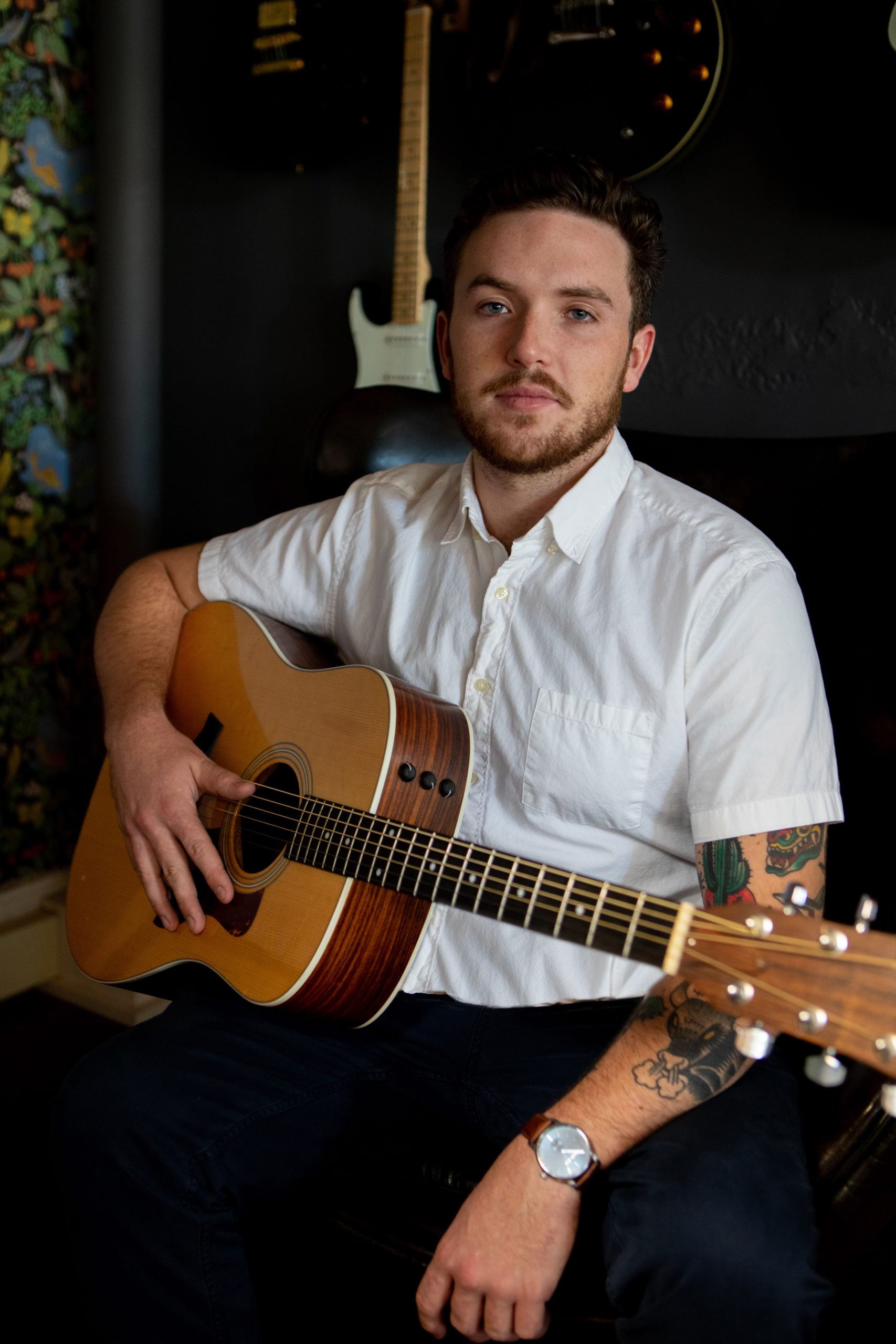By: Stephen Bennett, Staff Writer
The popularization of the folk-pop sound has unwittingly hindered attempts at an authentically diverse folk revival. Bands like Mumford & Sons, The Head & the Heart, and The Lumineers, genuine and novel in their soft yet emotionally roaring songwriting, have developed a formula for legions of other folk artists to model. Local singer and multi-instrumentalist, Sam Hastings, on his maxi-single, Hopeful, utilizes many of these folk-pop tropes to his advantage: executing them in a simple manner that attracts the listener for a fun listen, only to shock them with the cathartic nature of reveling in pain.
Hailing from Ridgefield, Connecticut, now based in Portland, Hastings played bass, guitar, and eventually sang throughout his formative years, leading to a seemingly penultimate moment with an appearance on the 15th season of The Voice. Unfortunately, he was passed on by the judges, but frankly, Sam holds more heart than a fictionalized commercial program of “dreams” coming true.
This debut tells three separate stories that ultimately yield a whole. The first track, “Won’t Forget”, sets the tone for the EP with well-mixed acoustic guitars, a lead, and ambient fixture faintly teasing in and out during the choruses, all buoyed by Hastings’s pained and expressive voice. His vocal howl and timbre hold strong as he avoids using folk-appropriated language to tell his story. What is riveting about the story he tells is that it unfolds without any context. All we know is that each stanza complicates the last, a shifting of the blame within the relationship in question. The mystery further entices as the narrator as it begs the question: “Do I miss my past love or do I miss not being lonely all the time?”
The record hits its peak with “Look What I’ve Become”. If someone told me that this was a hit song on the radio, I’d probably believe them. It’s equipped with a sweet banjo melody line and a steady yet raucous rhythm acoustic that rides along with the power of repetition, but the repeats don’t feel stale, as the dynamics of the accompaniment never grows weary. The bass matches the emotional intensity of the track, thudding in the back of the mix like a heartbeat, which serves as a juxtaposition to the strikingly free-feeling sonics. These elements are blended together with impressively succinct sound engineering.
Besides the song being utterly catchy with Sam’s crying chorus, “Well would you look at what I become,” the piece rests as an example of what Hasting’s songwriting abilities can reach. On “Look”, he is able to examine himself beyond acknowledging his own mistakes, admitting that, “I’ve become the man I said I’d never be.” Such sentiments are not unusual in music and literature about addiction and formative emotional trauma, but the tone in which they are delivered is both sickly and powerful, as we witness the cycle of familial distress continue on. Towards the end of the last verse, the barrier hiding personal regret and anger is broken, opening a window of vulnerability:
Now I’m sitting all alone,
This house just ain’t a home,
It used to be top shelf
Doesn’t matter when you’re by yourself
The third track of the record is similar to the first two, built with droning guitar riffs, with the exception of a newly added harp, but it’s the title that makes clear the grimness that Sam is able to hide with tonal illusion. “Heroin” can very well be about the devotion you have to a person in love, or quite literally about heroin. No matter what the artist’s intent was or one’s personal reading of the track, its themes can be applied to both scenarios that tell the tale of hurt, sometimes unwilling, a soul who is driven by a desire to feel complete.
Despite being only three tracks long, Sam Hastings’ “Hopeful” is able to pack a fair amount of emotional levity; enough to leave the audience craving more of his vulnerability. As it currently stands, “Heroin” does not provide a keen sense of resolution to the trio of tracks, rather it leaves you feeling hopeless for the narrator as he seems to fall back into a reluctance to change, a hope for the willingness to change that is exhibited on “Look What I’ve Become”.
In a way, the tracklisting mimics the cycle of troubles that Hastings explores. Perhaps that’s the point he’s trying to make.

